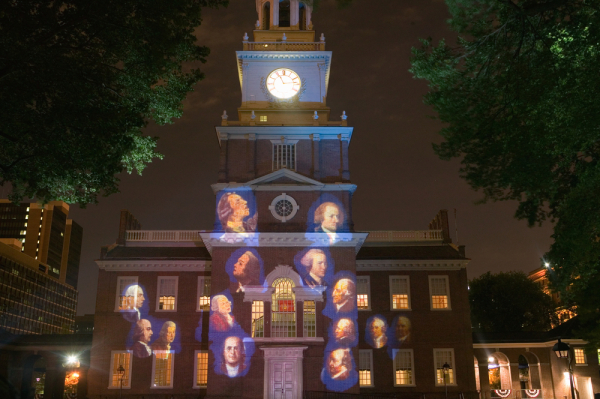The Constitutional Convention
- December 9, 2014
- By Marjorie Frank
Making history come alive for students can be a challenge. The size of the challenge varies with the time period and the geography — “Long ago” is often more challenging than “now;” “far away” is often a tougher sell than “here.” Except for students in living Philadelphia, the Constitutional Convention is a double whammy: It is both long ago and far away.
One strategy for addressing the challenge is to slip time. By that I mean guiding students back to the time of the Constitutinal Convention or bringing the events of the Convention to the present. Your students’ age, interests, and computer skills, as well as your own, may determine which way to go.
Both strategies begin after students have an initial understanding of the main events of the Constitutional Convention. This, they may obtain by reading a textbook, watching a video, or doing online or print research on their own. One website to explore (and one I will mention again later) is http://teachingamericanhistory.org/convention/the-convention/. Here, writer Gordon Lloyd describes the Constituional Convention as a drama in four acts and, in addition, provides a day-by-day summary of happenings.
The next step, which also applies to both strategies, is for students to pick a Convention delegate to “adopt.” If you’re living in a state that was one of the original 13, your students might want to pick a delegate from your state. Or perhaps they’d like to follow the youngest delegate (Jonathon Dayton, age 26), or the oldest (Ben Franklin age 81), or a famous delegate (James Madison), or a relative unknown (Elbridge Gerry), or someone whose background simply interests them. For a page with profiles and biographic information about each delegate, go to:
http://teachingamericanhistory.org/convention/delegates/age/.
Encourage students to use the information on this page and elsewhere, to select a delegate.
Allow time for students to become familiar enough with their delegate to imagine the kind of person he was. If you wish, have students work in small groups organized around their delegates—all the delegates from a particular state, or of a particular age or a particular background.
Students will also need to know something about life in the late 18th century. In addition to the usual sources of information, you might want to have them check out http://articles.mcall.com/1987-06-28/features/2569915_1_horse-farming-rural-america. Here, they’ll learn that life expectancy at the time was 38, that the population was overwhelmingly rural, and that travel was painfully slow: 50 miles per day by horse, 12-20 miles per day by wagon or coach.
Armed with information like this, your students may be ready to walk in their delegate’s shoes and imagine his experience from beginning to end. Their “assignment” is to keep track of the feelings and thoughts their delegate might have had.
Here is where the the time slip comes in. If time slips backward, students may choose to keep a journal or a diary beginning with their trip to Philadelphia (via horse or carriage) and including the major events of the Constitutional Convention and the journey home. Or perhaps they’ll decide to write letters home or to send drawings with captions that illustrate the experience.
If time slips to the present, students may write about Skype or Facetime sessions with other delegates as there may be no need to meet in person. Maybe they’ll start a Facebook page (real or imagined), post Tweets, or interact with other forms of social media.
Key to either approach is that students give themselves over to their delegate, deeply imagining his life at the time. To spark their creativity, you can raise questions that lead students to think about the experience quite literally: For students slipping back in time, How would a person of their delegate’s age choose to travel—by horse or by carriage? How far is it from their delegate’s home community to Philadelphia? How many days travel does that represent? Where would they stay on the way? How might their delegate feel about his committee assignment? And so forth.
For students bringing the Constitutional Convention forward to the present time, What would their delegate Tweet in 140 or fewer characters? What images would he post on Facebook? What captions would accompany each image? How might he use Google Docs? Instagram? Pinterest? YouTube? Would his delegate create a blog? If so, what would he write?
At a more general level, What did their delegate contribute to the proceedings? What might his opinion of the Constitutional Convention’s major accomplishments be? Of the process he participated in?
Responses to questions like these should comprise the content of students’ work, whether they are meeting their delegate in his own time or bringing him forward to the present. In either case, they’ll be taking a step closer to events whose consequences we still feel today. And they’ll be doing the kind of close reading and deep analytical thinking that is so crucial to true learning.



